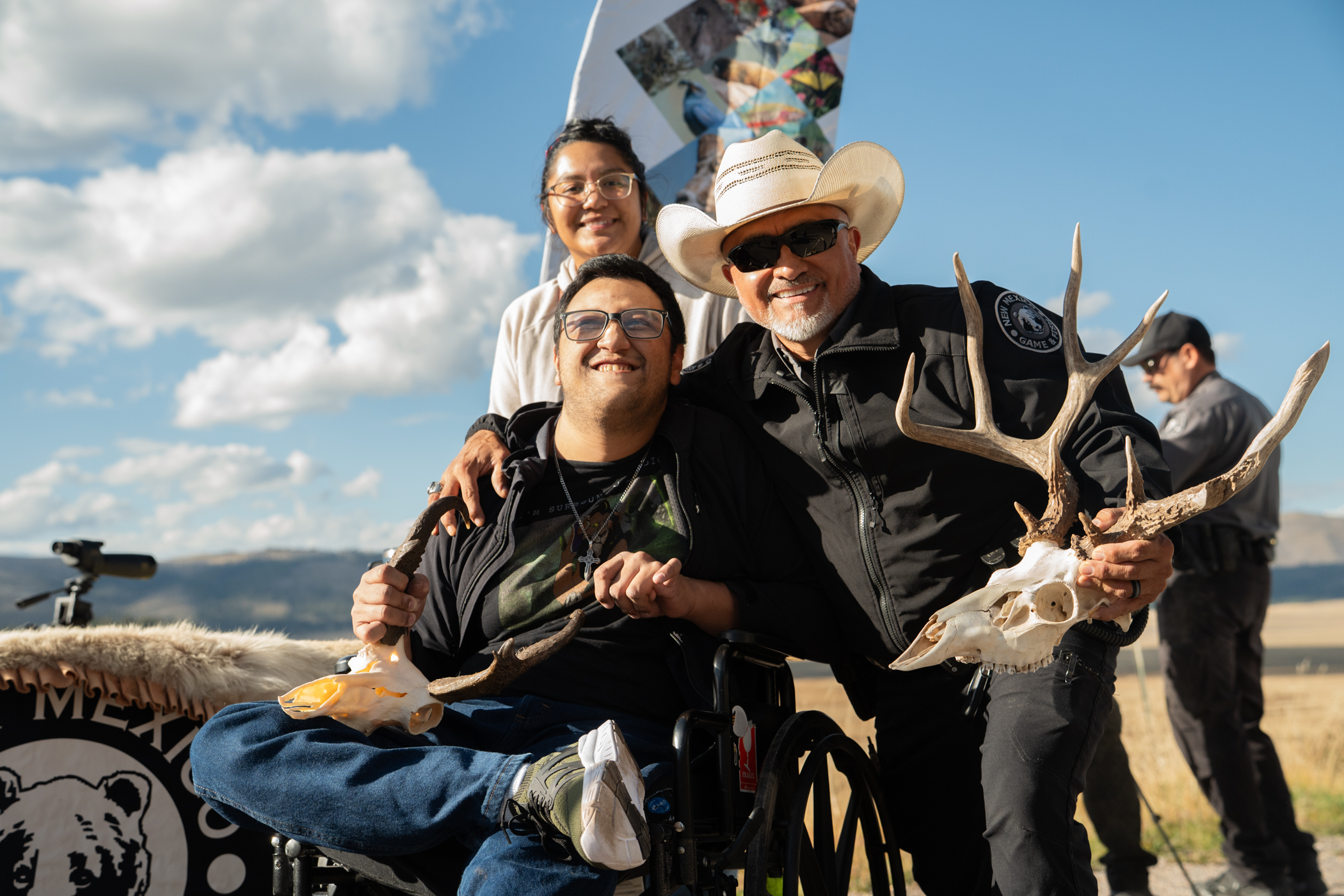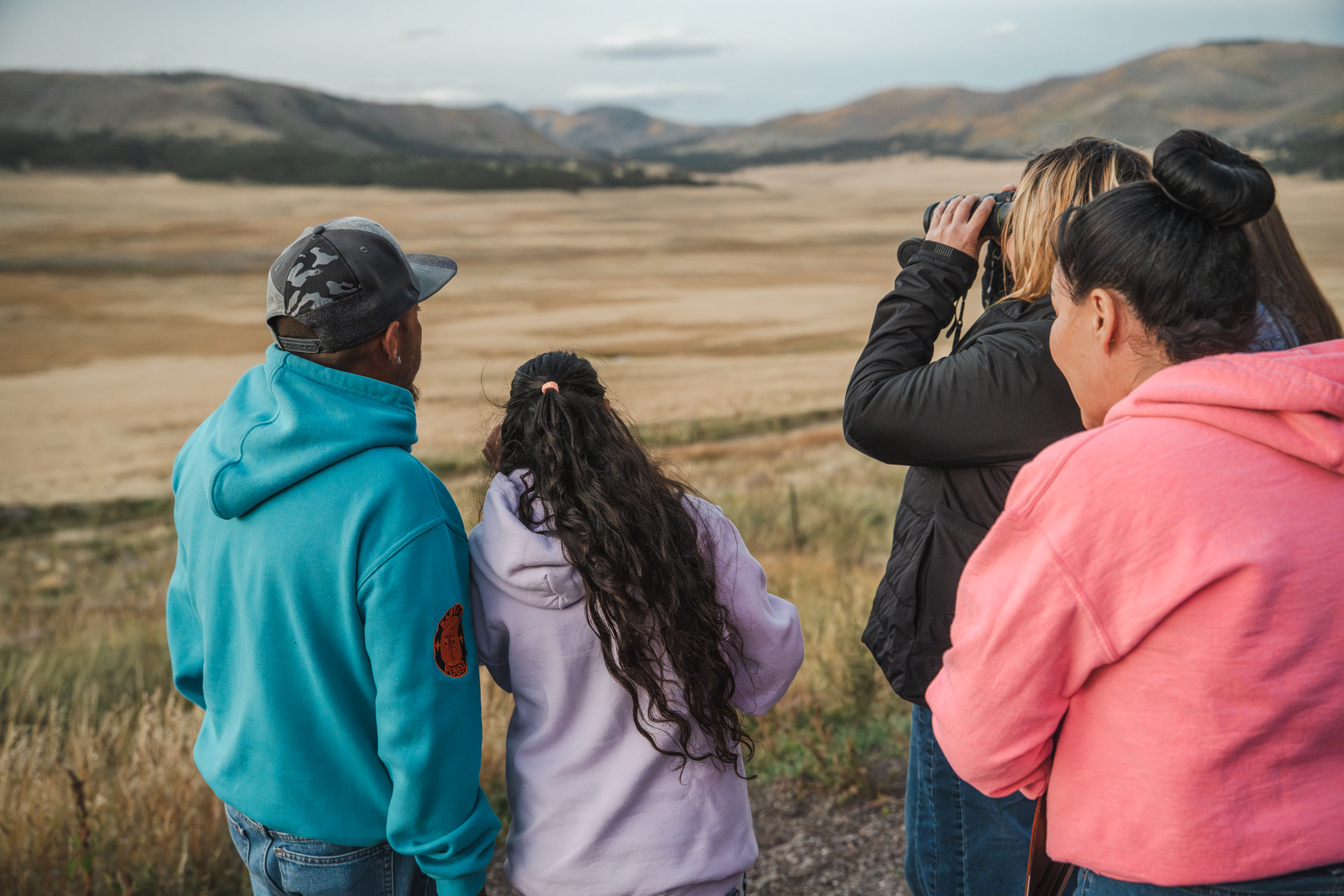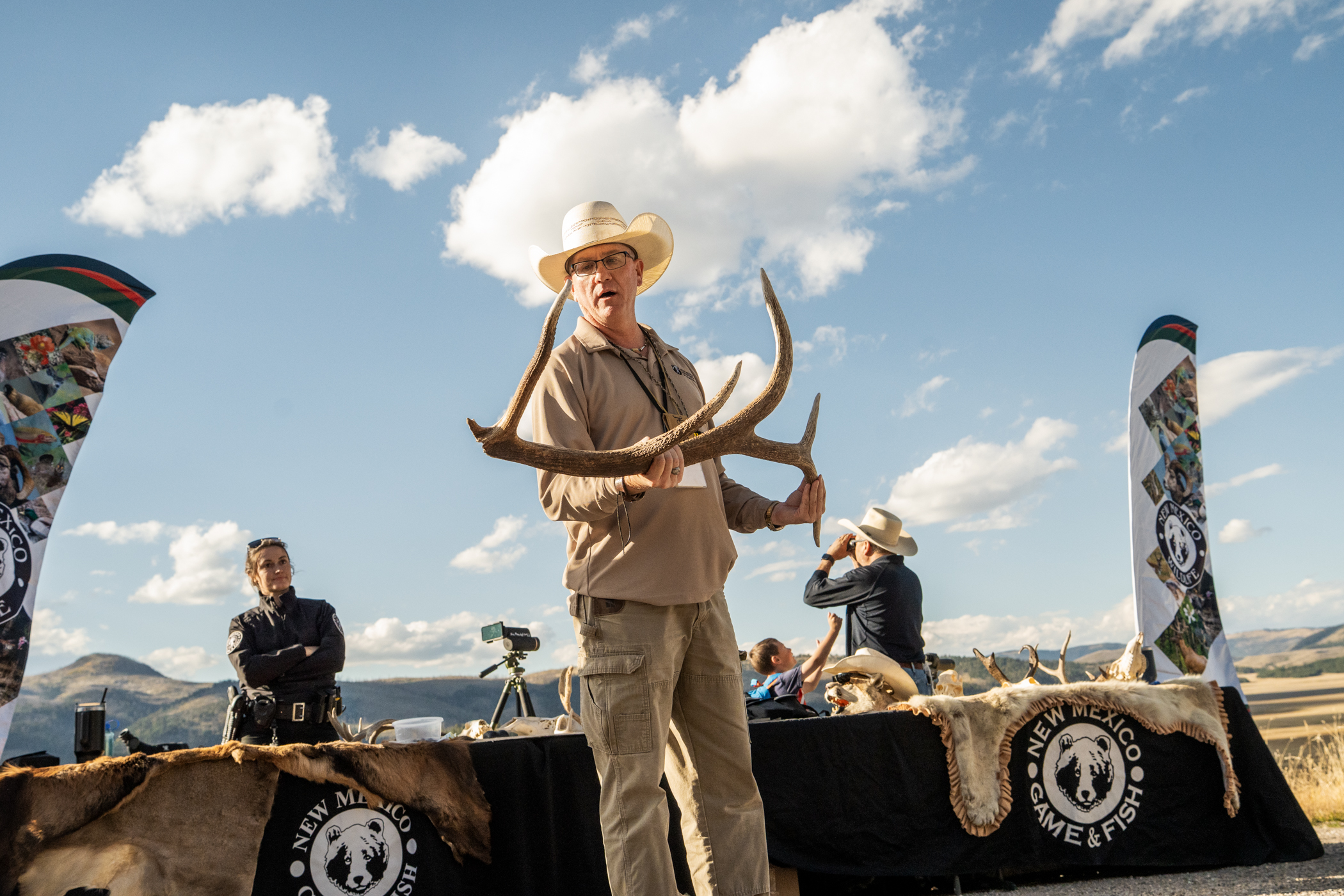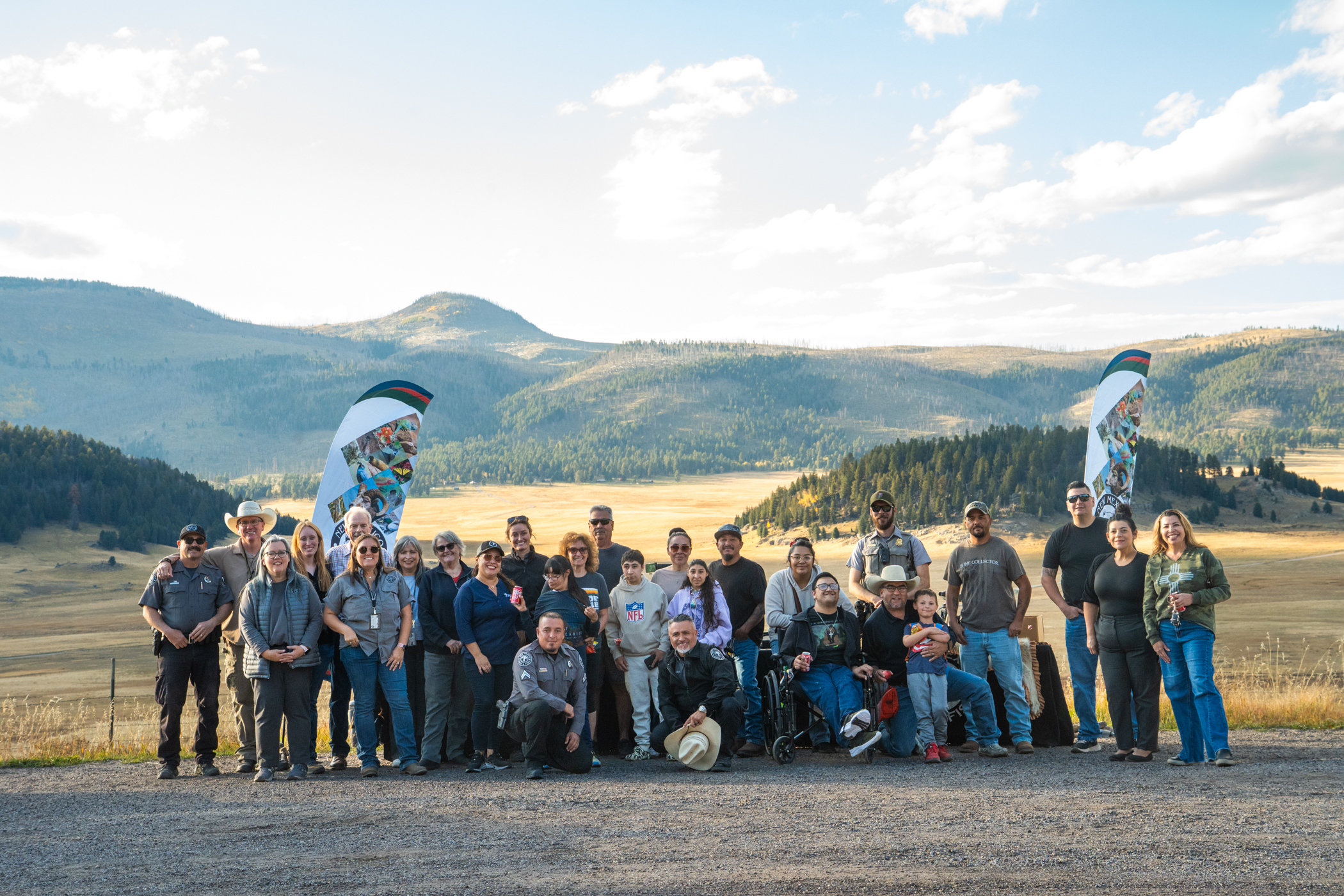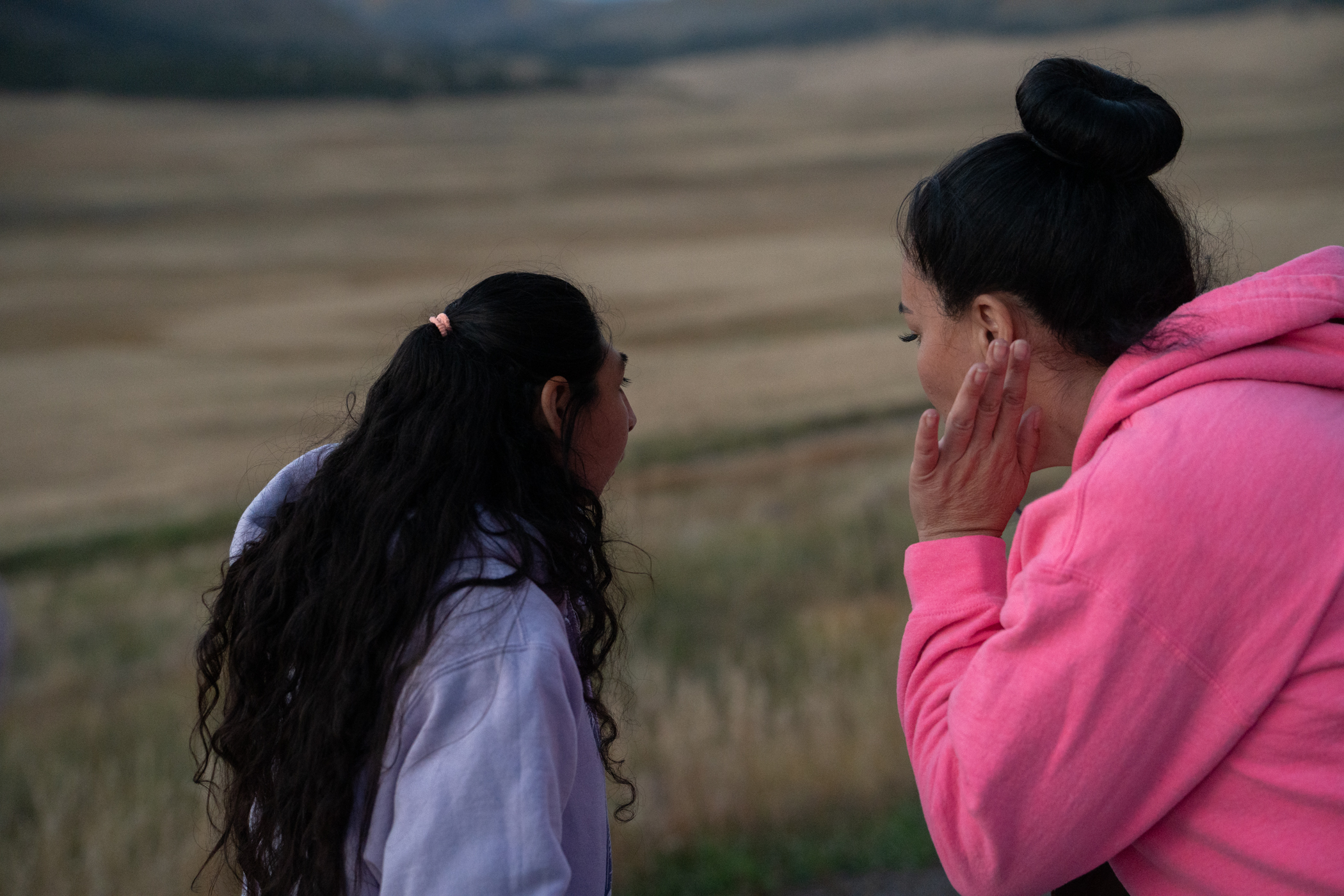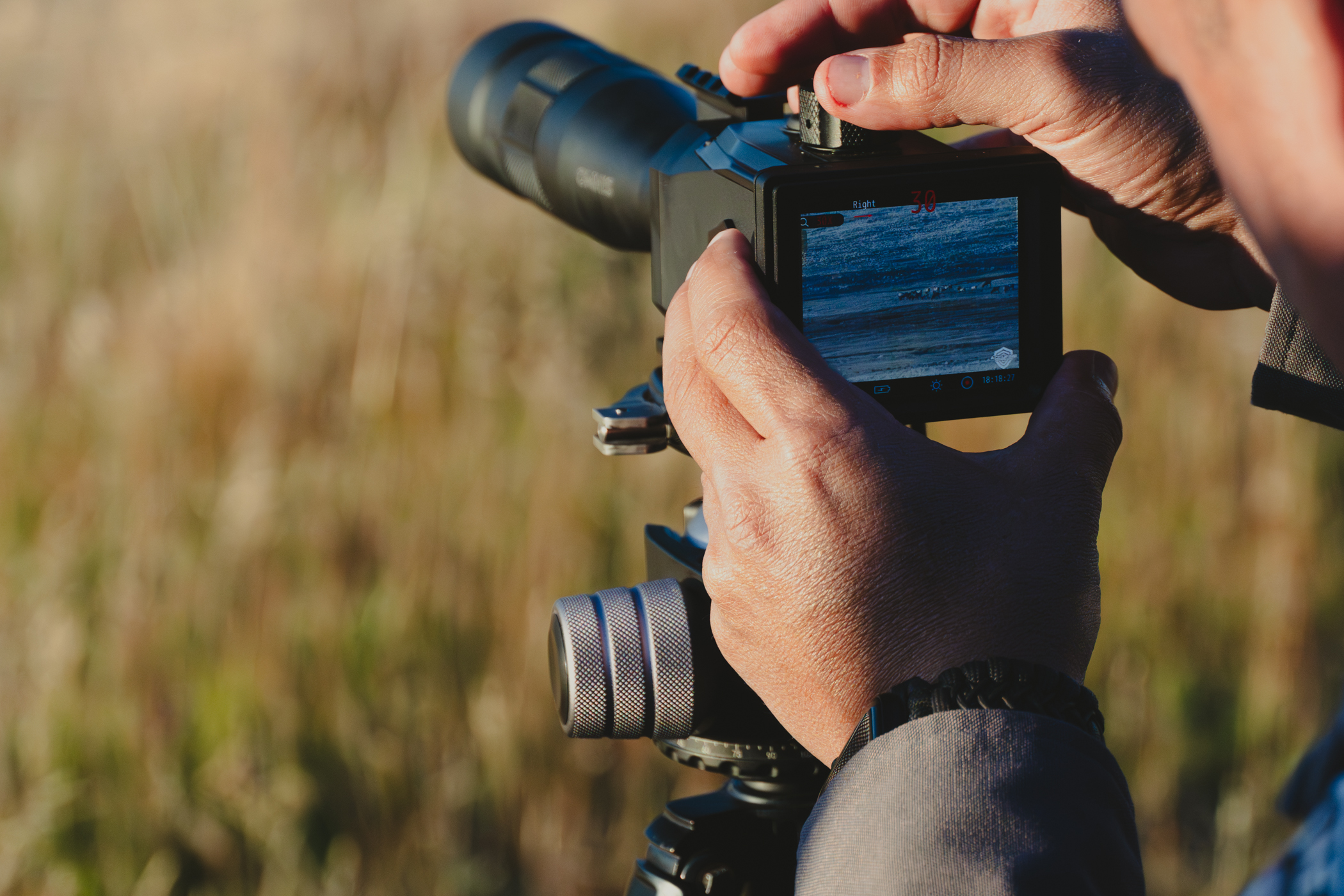Participants in the Wildlife for Everyone event enjoyed the opportunity to view elk in the Valles Caldera in October.
By Dela Joyner
When the leaves of the aspens start to turn into gold, a familiar sound can be heard through the Valles Caldera. This sound is the bugling of a bull elk. The landscape was once home to a volcano and it is one of New Mexico’s most iconic locations. This seasonal display has drawn wildlife enthusiasts, outdoorsmen and women to the National Preserve from across the nation for years.
The elk were out roaming in the Valles Caldera during the Wildlife for Everyone event.
This year, the park had a group of special guests, marking the first “Wildlife for Everyone.” This event is a partnership between the New Mexico Department of Game and Fish, the National Park Service and Be the Blessing:The Richard Montoya Organization. The Department hosted a unique wildlife viewing event designed for children with disabilities. The goal was simple: give these young participants a chance to experience the wonder of the elk rut in a setting that few ever get to see, and make it accessible to everyone.
It was time for participants to pull out the binoculars and see what they could see.
During the event, participants learned about elk biology and the rutting season through hands-on educational presentations from Department staff, including educators, biologists conservation officers. They also focused on respecting wildlife and outdoor safety, as well as adaptive opportunities available through the New Mexico Department of Game and Fish, including exclusive hunts for those with mobility impairments or other disabilities.
Storm Usrey, the Department’s Conservation Education Manager, showed off an elk antler as part of his presentation.
One parent and organizer with Be the Blessing:The Richard Montoya Organization described the day as unforgettable and shared, “My family has had the best time ever. Savannah was so engaged, and Jared took so many pictures!”
Participants and Department staff came together for a group photo on a picturesque evening in the Valles Caldera.
The event was the first of its kind for the Department and it was a step toward building more inclusive outdoor experiences for all New Mexicans. The Department hopes to expand this opportunity and more like it in the future with the goal being to include more children and adults with both cognitive and physical disabilities in outdoor experiences – opening the door for everyone to connect with nature and the state’s incredible wildlife and wild spaces.
Tips for Wildlife Watching (courtesy of U.S. Fish and Wildlife Service):
The Wildlife for Everyone event was a thrill for participants of all ages.
• View from a distance. Give wildlife plenty of space. This is important for the animal’s well-being and your safety. To view wildlife up close without disturbing it, use a zoom lens, binoculars or a spotting scope.
• Do not disturb. Be respectful of nesting and denning areas. Avoid using amplified noises that may harm animals by frightening or misleading them. If you encounter wildlife (small or large), don’t touch — just enjoy the show. You may even see a sick or injured bird or animal. If you’re concerned, reach out to staff for the relevant land-management agency.
• Never feed wildlife. Feeding wildlife is dangerous for wildlife and people. Sharing your food can sicken an animal or encourage it to approach humans in the future, expecting a snack.
• Leave pets at home. Bringing pets to certain areas may be prohibited. Please check the relevant land management agency’s website to learn whether your pet can tag along. When welcome, pets are required to be on a leash. Regardless, leaving your furry companions at home may be a good idea because they may scare small animals or become prey for larger ones.
• Pack it in. Pack it out. Whether it’s the wrapper from a snack or scraps of food, be sure to keep your trash and food waste with you to dispose of at home. Make sure to look over rest areas for accidental droppings — and collect them before leaving.
• Leave No Trace. The phrase refers to a framework of seven principles that guide all adventurers to have a low impact while outdoors. Many of these tips are variations of those seven principles.
Tools for Adaptive Wildlife Watching:
Setting up the perfect shot takes a little patience.
• Wheelchair-mounted scopes can make it easier for those with mobility-related disabilities to get a better viewing angle.
• Car window mounts can create a more stable platform for cameras and scopes.
• A harness can make it easier to hold a scope or binoculars for longer periods of time.
Dela Joyner is the Public Information Specialist in the North Area for the New Mexico Department of Game and Fish.

